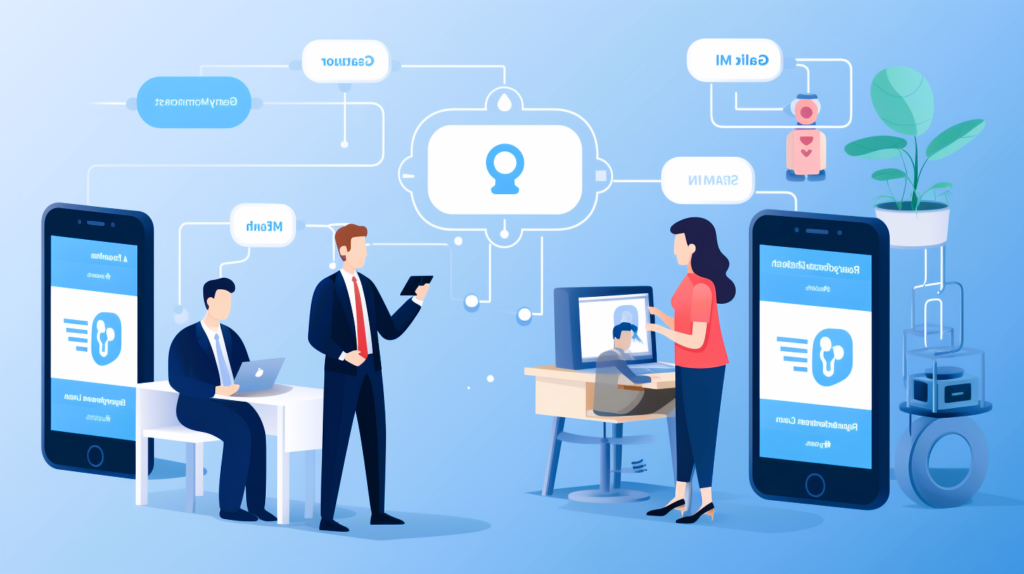In the era of digital transformation, businesses are increasingly turning to innovative technologies to enhance customer engagement and streamline communication processes. One such technology that has gained prominence in recent years is chatbots. These artificial intelligence-driven conversational agents are proving to be valuable assets for businesses looking to provide personalized and efficient customer service. This article explores the capabilities of chatbots, their benefits for customer engagement, and how businesses can harness their power to create meaningful interactions with their customers.
Understanding Chatbots
1. Definition:
A chatbot, short for chat robot, is a computer program designed to simulate conversation with human users, especially over the internet. It uses natural language processing (NLP) and machine learning algorithms to understand and respond to user queries in a conversational manner.
2. Types of Chatbots:
- Rule-Based Chatbots: Follow pre-defined rules and are suitable for relatively simple interactions.
- AI-Powered Chatbots: Leverage machine learning and NLP to understand user intent and provide more context-aware responses.
3. Deployment Platforms:
Chatbots can be deployed on various platforms, including websites, messaging apps, and social media platforms. They serve as virtual assistants, helping users with inquiries, information retrieval, and transactional processes.
Benefits of Chatbots for Customer Engagement

1. 24/7 Availability:
One of the key advantages of chatbots is their round-the-clock availability. They can handle customer queries and provide assistance at any time, ensuring a seamless and responsive customer experience.
2. Instant Response:
Chatbots offer instant responses to user queries, eliminating the need for customers to wait in queues or navigate through complex IVR systems. This immediacy contributes to higher customer satisfaction.
3. Cost-Effective Customer Support:
Automating routine and repetitive tasks through chatbots reduces the workload on customer support teams. This, in turn, lowers operational costs and allows human agents to focus on more complex customer issues.
4. Personalized Interactions:
Advanced chatbots can analyze user data and tailor responses based on individual preferences and behaviors. This personalization enhances the overall customer experience and fosters a sense of connection.
5. Efficient Handling of Frequently Asked Questions (FAQs):
Chatbots excel at handling common queries by providing quick and accurate answers. This efficiency frees up human agents to address more complex issues, improving overall support efficiency. Biometric technologies: expansion of human rights or threat to human rights?
6. Multichannel Engagement:
Chatbots can be deployed across various communication channels, including websites, messaging apps, and social media. This multichannel presence ensures that businesses can engage with customers wherever they are most comfortable.
Implementing Chatbots Effectively
1. Define Clear Objectives:
Clearly define the objectives of implementing chatbots. Whether it’s improving customer support, enhancing lead generation, or facilitating e-commerce transactions, having clear goals guides the development and deployment process.
2. Understand User Intent:
Implement natural language processing to understand user intent accurately. This enables chatbots to provide relevant and context-aware responses, enhancing the user experience.
3. Integrate with Existing Systems:
Ensure seamless integration with existing business systems, including customer relationship management (CRM) and backend databases. This integration allows chatbots to access relevant information and provide more personalized assistance.
4. Continuous Improvement:
Regularly analyze chatbot performance and gather user feedback to identify areas for improvement. Implement updates and refinements to enhance the chatbot’s effectiveness over time.
5. Human-Agent Handoff:
For more complex queries or situations that require human intervention, implement a smooth handoff process to transfer the conversation to a human customer support agent. This ensures a seamless transition for the customer.
Standards in Chatbot Development
For those interested in exploring standards and best practices in the field of chatbot development, the Wikipedia page on Chatbot offers comprehensive insights. This resource covers various aspects, including the history of chatbots, development approaches, and notable use cases, providing valuable perspectives on the standards that shape the chatbot landscape.
Challenges and Considerations

1. User Privacy:
Businesses must prioritize user privacy when implementing chatbots. Clearly communicate data usage policies, obtain user consent, and ensure compliance with data protection regulations.
2. Training and Accuracy:
Achieving high accuracy in understanding user queries requires robust training of chatbots. Continuous refinement is essential to improve accuracy and avoid misunderstandings.
3. Maintaining the Human Touch:
While chatbots provide efficiency, maintaining a human touch is crucial for customer engagement. Striking the right balance between automation and personalization is key.
4. Security Concerns:
Chatbots can be susceptible to security threats, including malicious intent or attempts to exploit vulnerabilities. Implement security measures to protect both the system and user data.
5. Cultural Sensitivity:
Chatbots should be culturally sensitive and considerate of diverse user backgrounds. Understanding and respecting cultural nuances is essential for effective communication.
The Future of Chatbots
As technology continues to advance, the future of chatbots holds exciting possibilities. Integrating advanced technologies like natural language understanding, sentiment analysis, and emotional intelligence will further enhance chatbots’ capabilities, enabling them to provide even more sophisticated and human-like interactions.
Conclusion
Chatbots have emerged as powerful tools for businesses seeking to enhance customer engagement and streamline communication processes. Their ability to provide instant, personalized responses contributes to improved customer satisfaction and operational efficiency. By understanding the benefits, implementing chatbots effectively, and considering key standards and challenges, businesses can harness the power of chatbots to create meaningful interactions and stay ahead in the competitive digital landscape.
